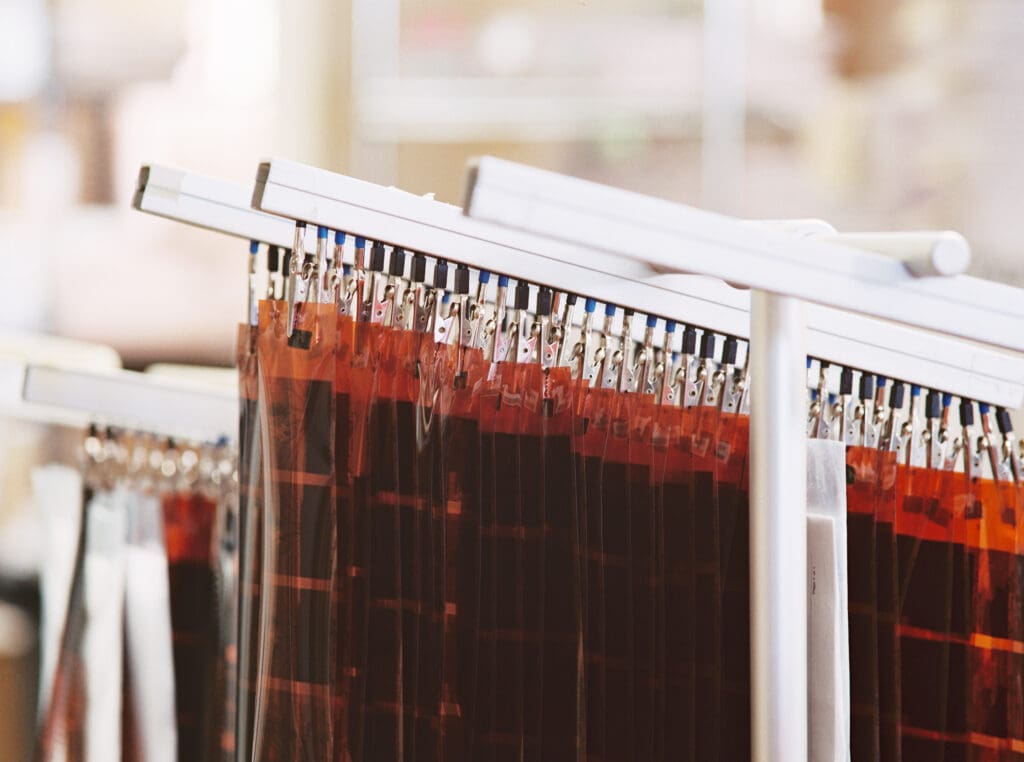What’s the best way to store both exposed and unexposed film? How can you keep your un-shot film as fresh as possible and preserve the physical backup of your art for generations? We got you. Here are some film storage hacks to ensure your film lasts! Let’s dive in!
Keeping Film Fresh
We all know film is sensitive to light, but did you know it is also sensitive to temperature and humidity? (Yeah, she’s a fragile little jewel.) When unexposed film is stored improperly, it can lead to a lack of contrast and create a fogged, hazy look in your images.
When it comes to protecting your precious rolls, you want to avoid storing them in bright, warm spaces with high humidity. Seek out cool temps, low humidity and keep your 120 film in its wrapper. (35mm film can stay in its plastic tub with the lid on.) Think vampire vibes. If Dracula would hang out there, it’s probably a safe bet.
Film Storage "Dos"
- Cool Temperatures
- Low Humidity
- Store Film Wrapped
Film Storage "Don'ts"
Warm Temperatures
High Humidity
Storing Film Unwrapped
Where is the Best Place to Store Film Long Term?
The refrigerator! Your fridge is the trifecta—it’s cool, dark and dry! Just be sure your film remains in its original packaging.
“But Photovision,” you say, “I shoot A LOT of film, and storing food in my fridge takes priority.” We get it—food is pretty important and we need it to live. Instead of letting film monopolize your fridge space consider buying a wine fridge for film storage. They’re small, useful for numerous situations and can be found on Amazon for $200. If you have prime you could be storing film efficiently in two days or less!
Even your trusty freezer can be a place of solace for your un-shot film. The cold temperatures press pause on the chemical changes that make film age.
Don't Forget!
While a fridge can provide easy and convenient storage for your film, it’s crucial to plan ahead to avoid potential issues. The biggest tip to remember is to remove your film from the fridge at least 24 hours before your shoot. This waiting period allows the film to return to room temperature before you start shooting.
When film does not have enough time to warm up to room temperature, it can develop condensation, much like a glass of ice water does when left out in the heat. This condensation can cause water damage to your film, which can ultimately ruin your final images. This is especially true in humid environments where the temperature difference between the fridge and the outside air is significant. (We’re talking to you Hawaii!)
Taking this simple step can have significant consequences for the quality of your photos. The presence of condensation can lead to blurred or spotted images, and in some cases, it can cause the emulsion to lift from the film base, leading to irreparable damage. Have we scared you into compliance yet? Always ensure you give your film ample time to acclimate to room temperature before shooting. With such a simple fix, it’s not worth the risk to wing it.

Best Practices for Handling and Storing Exposed Film
Your negatives are the MVP of your images. In a digital era, with fickle hard drives and costly cloud storage, images can get lost or deteriorate in quality. Storing your art in its pure, tangible form is the ultimate backup.
So, let’s talk about how to properly handle and store these bad boys:
- Make sure your hands are dry and clean before handling negatives. Oils from your hands can damage them.
- Only hold negatives by their edges, avoid touching any part of the image. Fingerprints on negatives causes smudges and other imperfections when scanned.
- If you remove your negative from its sleeving, be sure to clean the negative before placing it back in its sleeving. This will help protect the negative from scratching.
- Store negatives flat (binders work great!). Film warps easily.
- Do not store your negatives in an attic or garage! Keep negatives in a cool, dark, dry place where the temperature doesn’t change much. Excess moisture (from a humid or damp environment) can cause negatives to stick to their sleeving and temperature fluctuations can increase their rate of decay.
Lorem ipsum dolor sit amet, consectetur adipiscing elit. Ut elit tellus, luctus nec ullamcorper mattis, pulvinar dapibus leo.

